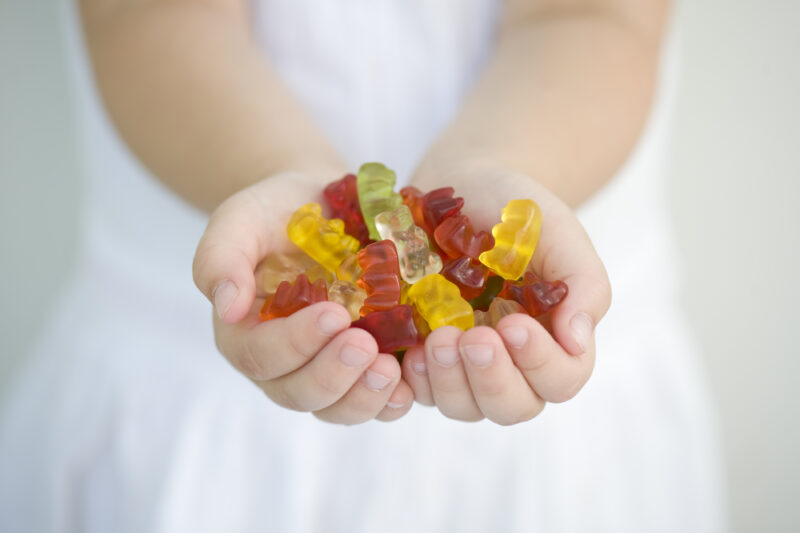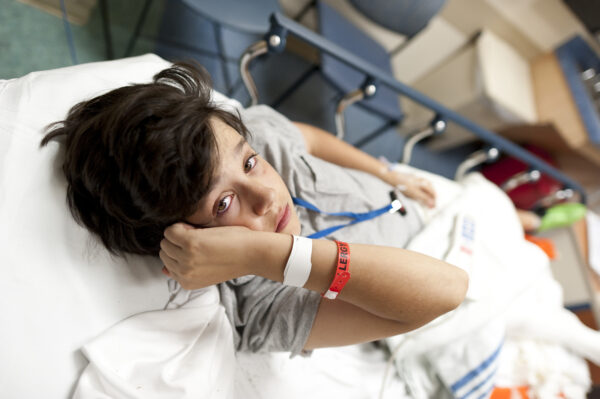 An increased access to marijuana as it becomes legal in more and more states across the country is leading to a growing problem. Edibles are winding up in the hands — and bellies — of children because they look so appealing to eat.
An increased access to marijuana as it becomes legal in more and more states across the country is leading to a growing problem. Edibles are winding up in the hands — and bellies — of children because they look so appealing to eat.
In recent years, Laura Pollauf, MD, has seen a sharp increase in both school-age and high-school kids coming to Akron Children’s Emergency Room due to accidental cannabis poisoning.
“I’ve seen more of this condition in the ER than I’ve ever seen in my 30-year career, mostly because edibles are now easier to get your hands on,” said the director of Akron Children’s Pediatric Emergency Medicine. “These products are marketed for adults, but the problem is they look and taste like regular food or candy that is so enticing to children and adolescents.”
Edibles are any food item that contains cannabis, the active ingredient in marijuana. Typically, cannabis is infused in candy and baked goods, such as gummies, chocolate, cookies and brownies, and may be in packaging that looks remarkably similar to these popular treats. Adults and some teens are eating these cannabis treats as an alternative to smoking marijuana for recreation or for medicinal purposes in hopes of easing insomnia, chronic pain and anxiety.
“Anyone who has edibles in their home increases the risk that their children will ingest it,” said Dr. Pollauf. “The problem is they contain a dangerous ingredient for children: THC.”
What can happen if my child ingests THC?
THC, also known as tetrahydrocannabinol, is found in cannabis and is the substance responsible for the effects on a person’s mental state, such as feeling “high” or experiencing euphoria.
Because kids are still developing, THC can be particularly risky for children. It can impair memory and concentration and has been linked to psychological problems. If a child consumes edibles that contain THC, you may notice a severe change in mental status and behavior.

Seek medical attention immediately if you think your child ingested an edible and has severe symptoms, such as difficulty breathing, fast heart rate or changes in mental status.
The child also may develop the following symptoms:
- Intoxication, such as slurred speech and poor coordination
- Intense anxiety or panic attacks
- Elevated heart rate
- Shortness of breath or difficulty breathing
- Nausea or dizziness
- Excessive sleepiness
- Seizures, in rare cases
“The impact that THC has on adults is magnified in kids,” said Dr. Pollauf. “Plus, children that eat an edible are consuming too large a dose for their body size. Compounding the problem is the amount of THC in edibles varies by product.”
What should parents do if they suspect their child ingested an edible?
If you believe your child ingested an edible, call your local poison control center for advice. However, if your child experiences severe symptoms, such as difficulty breathing, fast heart rate or changes in mental status, seek medical attention right away.
“It’s especially important to take your child to the ER if they’re young and you don’t know how much they ingested,” said Dr. Pollauf. “Symptoms can be more severe in children, and they can develop more slowly than smoking or vaping cannabis, but symptoms can last for hours.”
How can parents protect their kids from edibles?
Start an age-appropriate conversation about the dangers of edibles early, even if you don’t think they will affect your child. Remind kids not to take candy or food from anyone they don’t know or trust, especially if they don’t know what’s in it.
For older kids, keep an open, honest and ongoing dialogue about edibles and the dangers of marijuana use. A good approach is to ask teens open-ended questions in a non-judgmental way, which allows them to share what they know without lecturing.
The best way to protect your kids is to not keep edibles in your home. But, if you do have edibles around, make sure to keep them locked up and out of sight and reach of children. Edibles should be stored just like you would prescription and over-the-counter medications.
You also can take edibles out of the original packaging and put them in child-resistant containers.
“Protect your kids from having access to edibles,” warned Dr. Pollauf. “Edibles put kids at an increased risk because they are very enticing and can look exactly like candy you buy in stores.”
Find an emergency or urgent care location near you.










